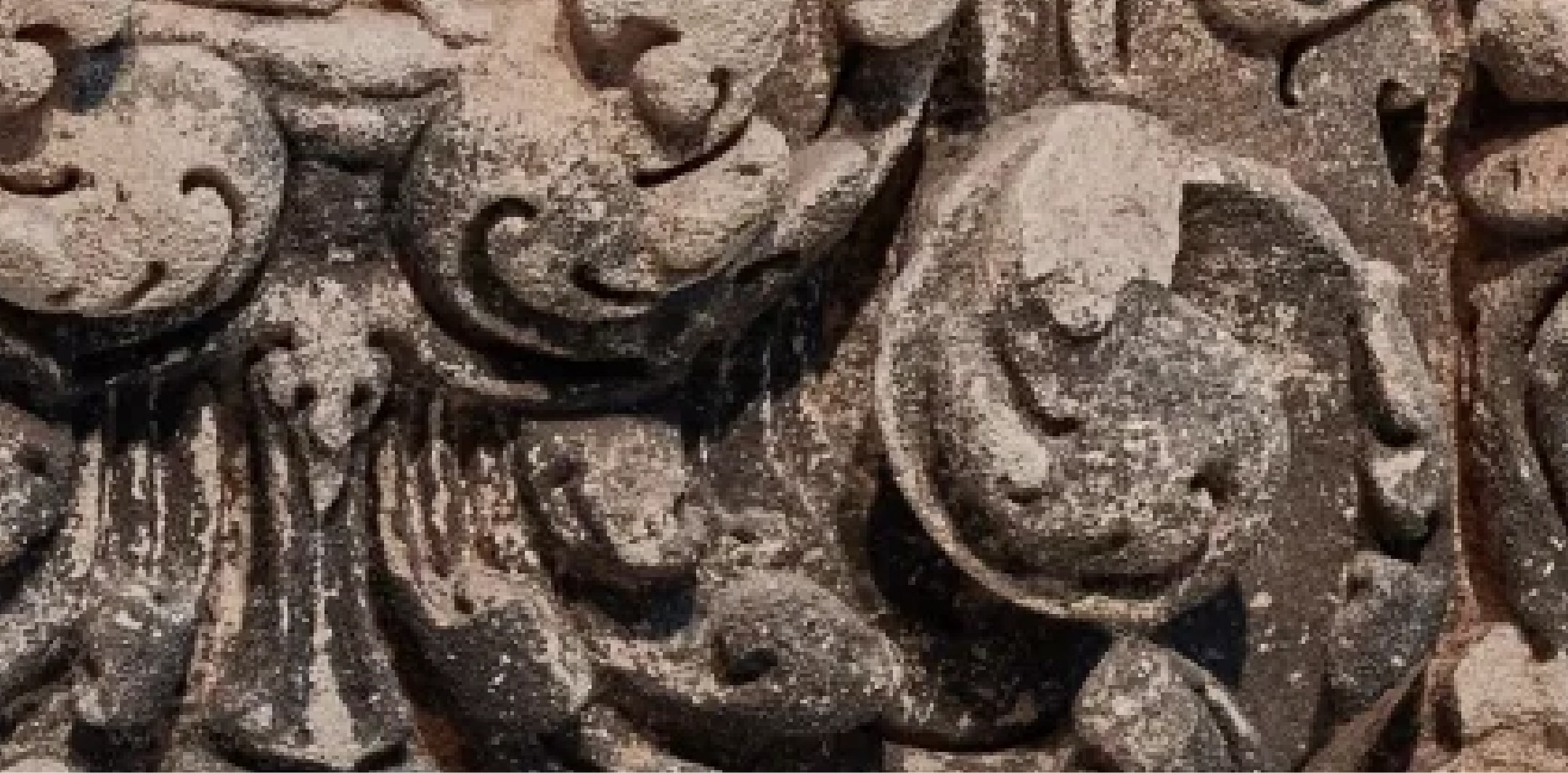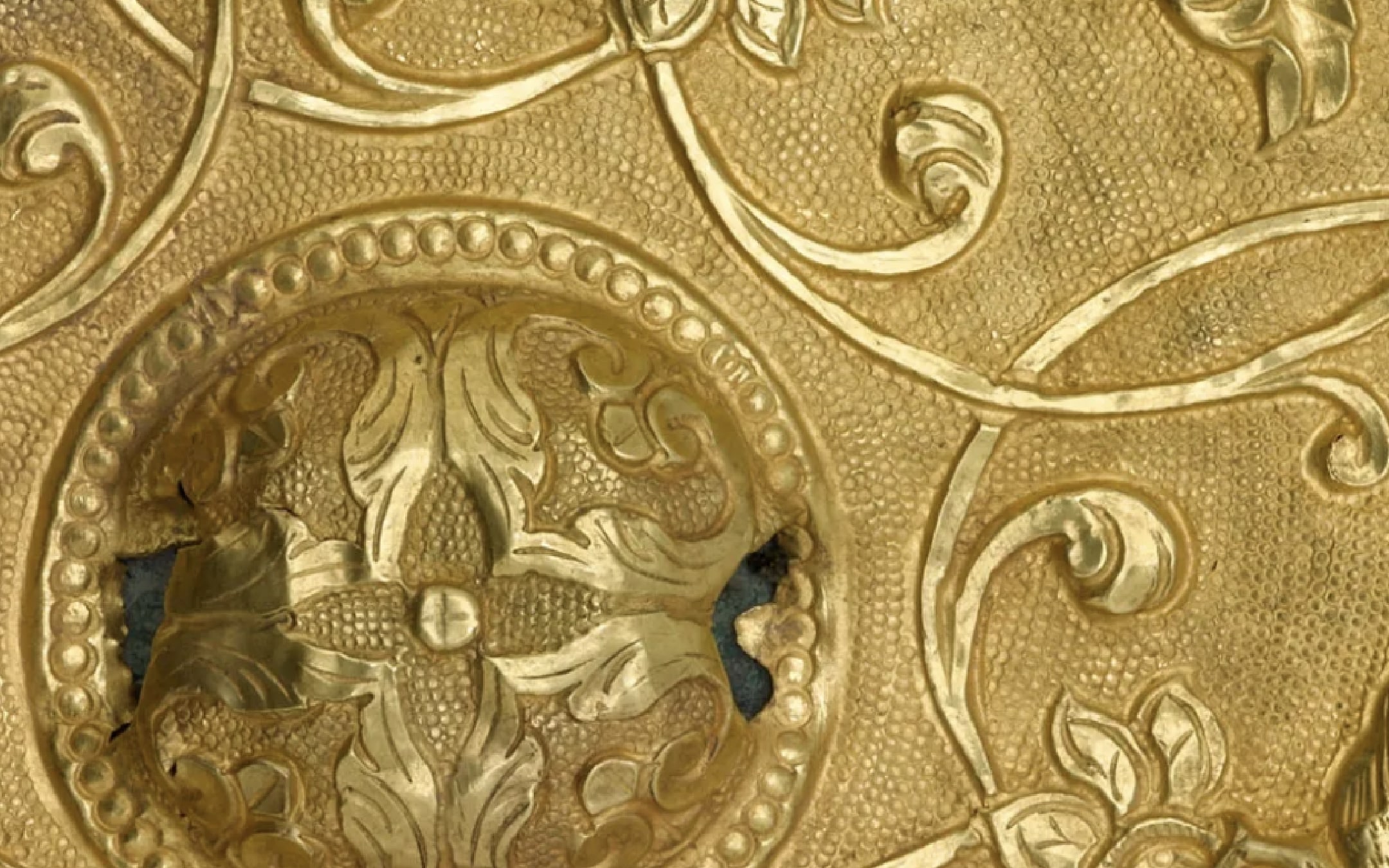Mold

Terms of Use
Usage Conditions ApplyAt A Glance
-
Period
19th century -
Geography
India? -
Dimension
H x W x D: 7.8 x 5.1 x 3.5 cm (3 1/16 x 2 x 1 3/8 in) -
Accession Number
FSC-P-6960 -
EDAN ID
edanmdm:fsg_FSC-P-6960
Object Details
-
Description
Earthenware mold of hard-fired yellow clay. One edge broken and missing. Pattern of single leaf with traces of black in hollows. Possibly Indian. -
Inscriptions
(verso) Ernst Herzfeld collection number inscribed in red-orange, “H75” -
Provenance
?-1984Ernst Herzfeld (1879-1948), method of acquisition unknown [1]From 1984National Museum of Asian Art, Smithsonian Institution, gift of Ernst Herzfeld [3]Notes:[1] See “Catalogue of the Herzfeld Archive, VIII. List of the Archaeological Artifacts, pages 603-613,” copy in object file. Object is described as “Possibly Indian, 19th c.”See also offer letter from Ernst Herzfeld to Alexander Wetmore, Secretary of the Smithsonian Institution, dated April 24, 1946, copy in object file. Herzfeld’s offer letter states, “My dear Dr. Wetmore: [/] Having duly consulted with [Archibald G. Wenley,] the Director of the Freer Gallery of Art, I hereby present to the Smithsonian Institution, the Archives described in my letter of April 18, 1946 to the Director of the Freer Gallery of Art, with the proviso that said Archive be deposited in, and under, the direction of the Freer Gallery of Art.”See also letter of acceptance from Alexander Wetmore, Secretary of the Smithsonian Institution, to Ernst Herzfeld, dated April 26, 1946, copy in object file. Wetmore states, “Dear Professor Herzfeld: [/] Mr. Wenley has transmitted to me your communication of April 24, by which you present to the Smithsonian Institution your Archive, as described in your letter to him of April 18, 1946. On behalf of this Institution I have [the] pleasure in accepting your gift under the terms stated […].”Ernst Emil Herzfeld (1879-1948) was a German architect, archaeologist, and historian of Islamic and Pre-Islamic studies. After training as an architect, he studied archaeology under Friedrich Delitzsch (1850-1922) from 1903 to 1906 at the excavations at Assur in Mesopotamia. A student of Latin, Greek, Arabic, Persian, Turkish, and Hebrew, Herzfeld received a doctorate in Humanistic Studies at universities in Munich and Berlin in 1907. His work with Friedrich Sarre (1865-1945) to survey the monuments of the Tigris-Euphrates valleys resulted in landmark studies in architectural history, published in 1911 and 1920. In 1920, Herzfeld was appointed to the chair of Historical Geography in Berlin and began his excavation at Samarra. Herzfeld's work there led to a six-volume publication. He published widely throughout his life on the sources of Islamic architecture and ornament, including the Royal Palace at Persepolis. From 1934 until the end of his life Herzfeld spent his time producing many books and articles, lecturing, and working at the Institute for Advanced Study at Princeton University (1936-1945). Objects excavated and collected by him may also be found at the Field Museum, The Metropolitan Museum, British Museum, Victoria and Albert Museum, Staatliches Museen (Altes Museum and Museum für Islamische Kunst). See Ernst Herzfeld Papers. FSA.A.06. National Museum of Asian Art Archives. Smithsonian Institution, Washington, D.C. Gift of Ernst Herzfeld, 1946.[2] In 1984, the objects in Herzfeld’s archive were transferred to the museum’s Freer Study Collection.Research updated November 7, 2024 -
Collection
Freer Study Collection -
Previous custodian or owner
Ernst Herzfeld (1879-1948) -
Origin
India? -
Credit Line
Gift of Ernst Herzfeld -
Type
Tool and Equipment -
Restrictions and Rights
Usage Conditions Apply
There are restrictions for re-using this media. For more information, visit the Smithsonian's Terms of Use page.
The information presented on this website may be revised and updated at any time as ongoing research progresses or as otherwise warranted. Pending any such revisions and updates, information on this site may be incomplete or inaccurate or may contain typographical errors. Neither the Smithsonian nor its regents, officers, employees, or agents make any representations about the accuracy, reliability, completeness, or timeliness of the information on the site. Use this site and the information provided on it subject to your own judgment. The National Museum of Asian Art welcomes information that would augment or clarify the ownership history of objects in their collections.
Keep Exploring
-
Related Resources
-
Date
-
Name
-
Place
-
Topic
-
Culture
-
Object Type

